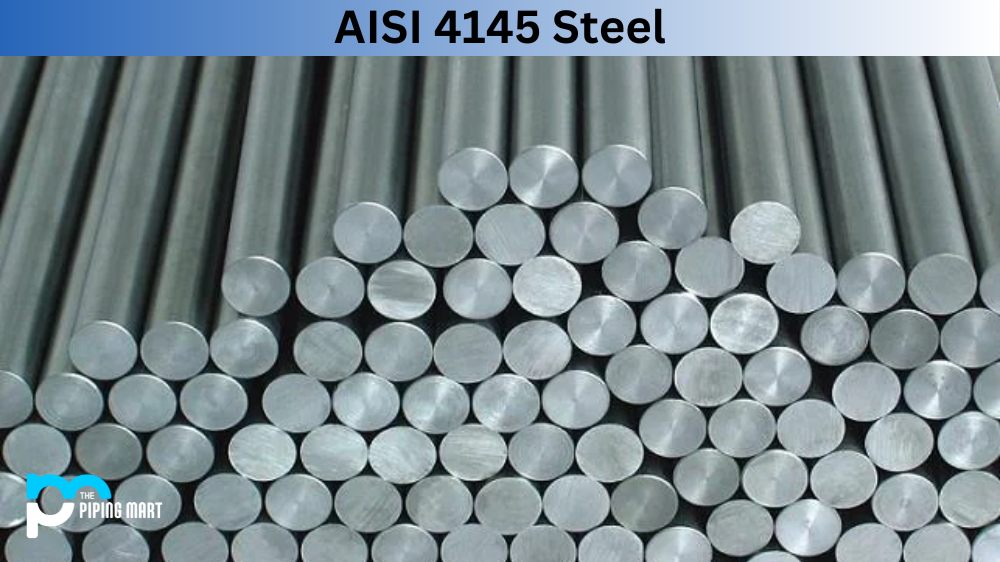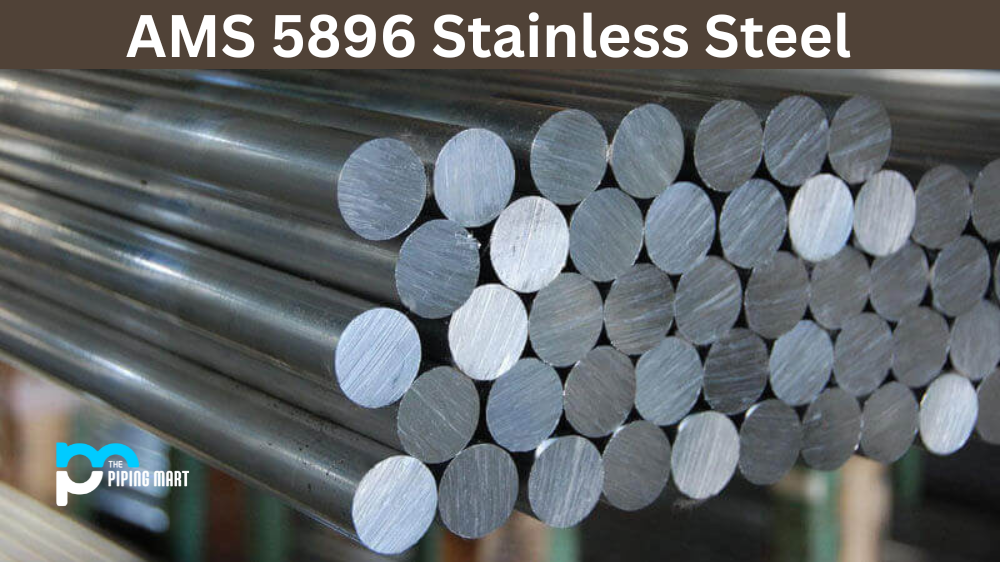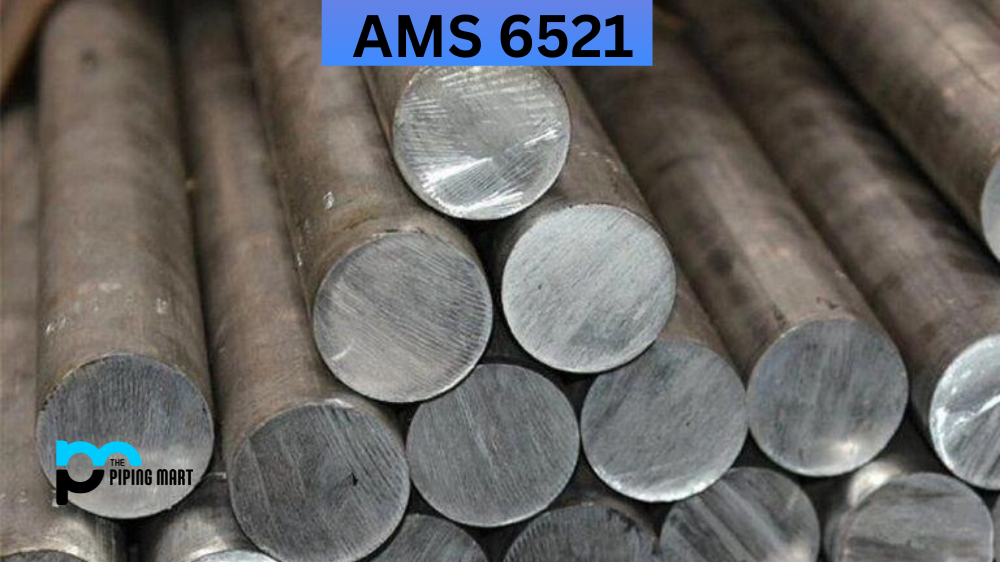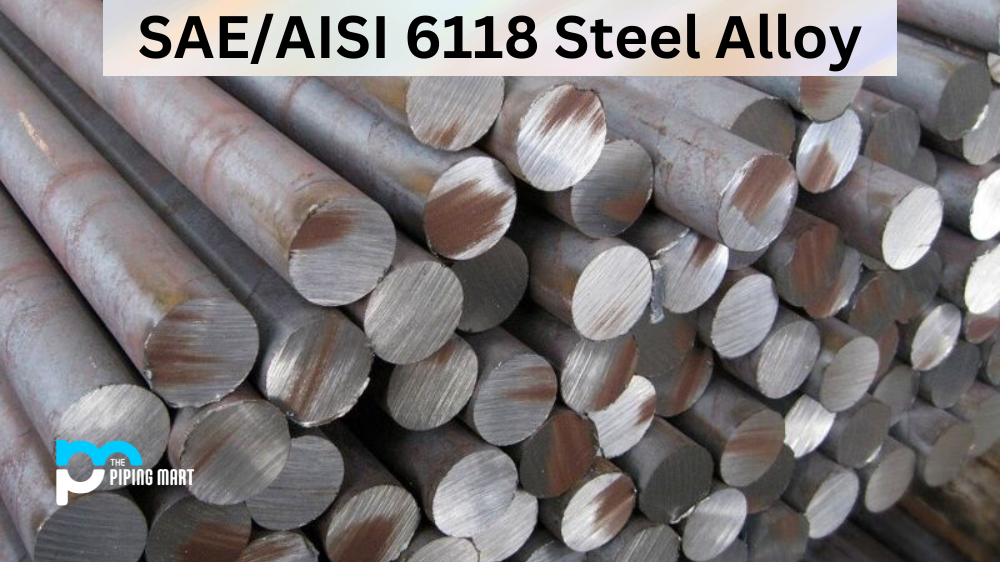Metal alloys have become an integral part of various industrial applications. One such alloy, AISI 4145, is a chromium-molybdenum steel used widely in the energy sector for manufacturing drilling tools, pump shafts, and other heavy machinery components. Understanding its composition, properties, and machining characteristics is crucial for designing robust and durable engineering components. This blog post will discuss everything you need to know about AISI 4145, including its uses and heat treatment guidelines.
What is AISI 4145?
AISI 4145 is a low to medium-carbon chromium-molybdenum alloy steel widely used in the oil and gas industry. It contains nominally 0.30% Carbon, 0.40% Manganese, 0.20% Silicon, 0.15% Chromium and Molybdenum as the main alloying elements, with additional elements such as vanadium and nickel being present in small quantities. This grade of steel offers good strength, toughness properties when heat treated, and superior ductility compared to other grades of similar composition, making it an ideal choice for various applications like drill collars, downhole tools, sucker rods etc., wherein strength & fatigue resistance are critical parameters.
AISI 4145 Composition
AISI 4145 is a low-alloy steel grade containing 0.45% carbon, 0.75% manganese, 1.00% chromium, 0.20% molybdenum, and 0.15% vanadium. The alloying elements enhance their mechanical and physical properties, such as strength and toughness. Additionally, the alloy’s controlled composition enables it to be quenched and tempered to improve its hardness and wear resistance.
| Element | Content (%) |
|---|---|
| Iron, Fe | 96.795-97.72 |
| Chromium, Cr | 0.800-1.10 |
| Manganese, Mn | 0.750-1.00 |
| Carbon, C | 0.430-0.480 |
| Molybdenum, Mo | 0.150-0.250 |
| Silicon, Si | 0.150-0.300 |
| Sulfur, S | ≤ 0.0400 |
| Phosphorous, P | ≤ 0.0350 |
AISI 4145 Mechanical Properties
AISI 4145 exhibits excellent strength, toughness, and wear resistance as a low-alloy steel grade. The minimum yield strength of AISI 4145 is 89 KSI, while the ultimate tensile strength is between 125-140 KSI, depending on the heat treatment conditions. The alloy’s high toughness and fatigue resistance make it an ideal choice for manufacturing critical components, including drill collars and heavy-duty shafts.
| Properties | Metric | Imperial |
|---|---|---|
| Bulk modulus (typical for steels) | 140 GPa | 20300 ksi |
| Shear modulus (typical for steels) | 80.0 GPa | 11600 ksi |
| Elastic modulus | 190-210 Gpa | 27557-30458 ksi |
| Poisson’s ratio | 0.27-0.30 | 0.27-0.30 |
| Hardness, Brinell | 208 | 208 |
| Hardness, Knoop (converted from Brinell hardness) | 230 | 230 |
| Hardness, Rockwell B (converted from Brinell hardness) | 94 | 94 |
| Hardness, Rockwell C (converted from Brinell hardness, value below normal HRC range, for comparison purposes only) | 15 | 15 |
| Hardness, Vickers (converted from Brinell hardness) | 218 | 218 |
| Machinability (annealed and cold drawn, based on 100 machinability for AISI 1212 steel) | 60 | 60 |
AISI 4145 Physical Properties
AISI 4145 has a density of 7.85 g/cm3 and a melting point of 1424°C (2580°F). Its coefficient of thermal expansion is 11.2 µm/mK and has a thermal conductivity of 42.6 W/mK. The alloy’s physical properties remain stable within a broad temperature range, making it an ideal choice for high-temperature applications.
| Properties | Metric | Imperial |
|---|---|---|
| Density | 7.85 g/cm3 | 0.284 lb/in³ |
AISI 4145 Equivalents
| ASTM A29 | ASTM A322 | ASTM A331 | ASTM A519 | ASTMA711 |
| ASTM A752 | ASTM A829 | SAE J1397 | SAE J404 | SAE J412 |
| ASTM A505 | SAE J770 | MIL SPEC MIL-S-16974 |
AISI 4145 Uses
AISI 4145 finds application in various heavy-duty and high-stress applications. In the energy sector, it is used for manufacturing drilling tools, pump shafts, and other components used in exploration and production activities. It also finds extensive use in the aerospace and defence sectors for manufacturing gears, shafts, and other critical components. Its excellent corrosion resistance and strength make it an ideal choice for seawater-drenched components, including marine motor shafts and other offshore applications.
AISI 4145 Heat Treatment
AISI 4145 can be subjected to various heat treatment processes to modify its mechanical and physical properties. The most common form of heat treatment for AISI 4145 is quenching and tempering, which involves heating the steel to a temperature of 927°C (1700°F) and cooling it rapidly in a quenching medium such as water, oil or air. The steel is then tempered to refine its mechanical properties.
AISI 4145 Machining
AISI 4145 is a moderately difficult steel machine that can be machined successfully using the right equipment and techniques. The alloy’s moderate hardness and toughness require high cutting forces, and sharp cutting tools and minimum chip loads are necessary to avoid tool wear and premature failure. Cutting fluids is highly recommended to prevent overheating and prolong tool life.
AISI 4145 Welding
AISI 4145 is an alloy steel that is commonly used for welding components. Its hardenability and wear resistance suit various applications, including heavy machinery, construction and automotive parts. Additionally, its high-strength properties allow for higher performance in challenging conditions when compared to other steels.
Conclusion
AISI 4145 is a low-alloy steel grade that finds application in various heavy-duty components manufacturing, supported by its excellent mechanical and physical properties. It is a highly durable alloy due to its excellent wear resistance and toughness, making it ideal for high-stress applications. Understanding its composition, properties, and machining characteristics is critical for the optimal utilization of the alloy and for designing cost-effective and robust components. Following the manufacturer’s recommended practices is essential to ensure optimal performance, from heat treatment to welding.

Meet Bhavesh, a seasoned blogger with a wealth of knowledge and experience. From metal products manufacturing to retail, Bhavesh has a diverse background in various industries and is dedicated to sharing his insights and expertise with readers.




